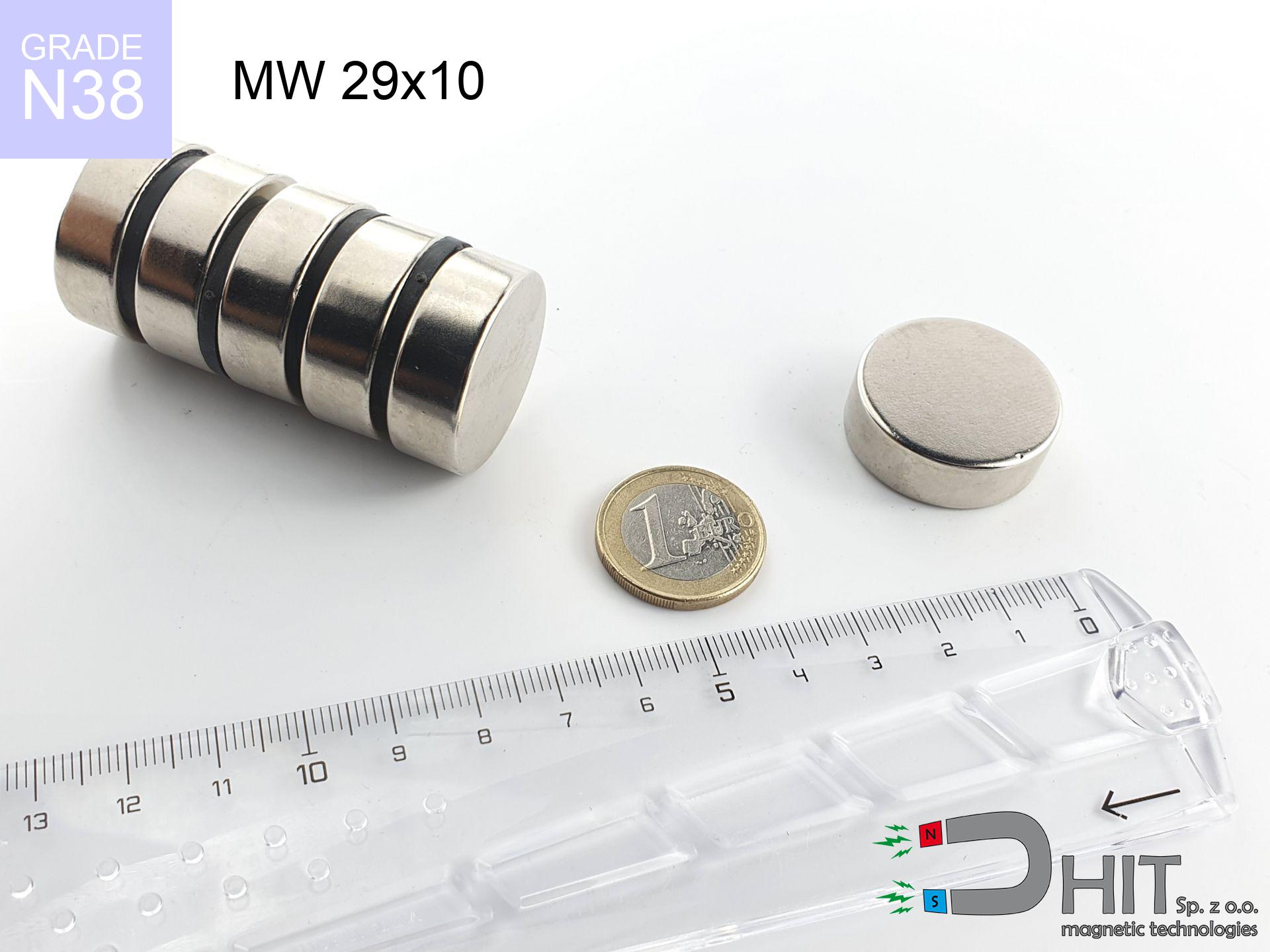CM PML-10 / N45
magnetic gripper
Catalog no 100478
GTIN: 5906301812647
Weight
33300 g
Magnetization Direction
↑ axial
Load capacity
1000 kg / 9806.65 N
2 019.05 ZŁ with VAT / pcs + price for transport
1 641.50 ZŁ net + 23% VAT / pcs
bulk discounts:
Need more?Want to negotiate the price?
Call us +48 22 499 98 98 or write via form on the contact page. Test the magnet's power with our power calculator.
Orders placed by %hour% are shipped the same day.
CM PML-10 / N45
Magnetic properties of material %material%
Physical properties of NdFeB
Shopping tips
Advantages and disadvantages of neodymium magnets
Neodymium magnets, also known as NdFeB magnets, are currently the strongest permanent magnets available on the market. Their exceptional magnetic properties make them suitable for various industries, technologies, and everyday life. Below are the key advantages:
- Immense attractive force: Even small neodymium magnets generate a very strong magnetic field.
- High coercivity: They are resistant to demagnetization by external magnetic fields.
- Wide operating temperature range: Standard neodymium magnets operate up to 80°C, with special versions up to 230°C.
- Variety of shapes and sizes: Available in many forms, making them easy to adapt to specific applications.
- Relatively low price compared to strength: They offer the best strength-to-price ratio among all magnets.
- Longevity: With proper use, they retain their magnetic properties for many years.
- Versatility of applications: From electric motors to speakers, separators, toys, and jewelry.
Despite numerous advantages, neodymium magnets also have certain disadvantages to consider:
- Brittleness: They are hard but brittle and prone to cracking or chipping upon impact.
- Susceptibility to corrosion: They require a protective coating (e.g., nickel, zinc) to prevent rusting.
- Limited operating temperature for standard versions: Above the Curie temperature, they lose their magnetic properties.
- Strong magnetic field can be dangerous: They can damage electronics, magnetic cards, and pose a risk of attracting metal objects with great force.
- Difficulties in mechanical processing: Due to their hardness and brittleness, processing them is complex.
Handle with Care: Neodymium Magnets
The magnet is coated with nickel - be careful if you have an allergy.
Studies clearly indicate a small percentage of people who suffer from metal allergies such as nickel. An allergic reaction often manifests as skin redness and rash. If you have a nickel allergy, try wearing gloves or avoid direct contact with nickel-plated neodymium magnets.
Neodymium magnets are among the strongest magnets on Earth. The surprising force they generate between each other can shock you.
To use magnets properly, it is best to familiarize yourself with our information beforehand. This will help you avoid significant harm to your body and the magnets themselves.
Dust and powder from neodymium magnets are flammable.
Avoid drilling or mechanical processing of neodymium magnets. If the magnet is crushed into fine powder or dust, it becomes highly flammable.
Keep neodymium magnets away from the wallet, computer, and TV.
The strong magnetic field generated by neodymium magnets can damage magnetic media such as floppy disks, video tapes, HDDs, credit cards, magnetic ID cards, cassette tapes, or other devices. They can also damage devices like video players, televisions, CRT computer monitors. Do not forget to keep neodymium magnets away from these electronic devices.
People with pacemakers are advised to avoid neodymium magnets.
In the case of neodymium magnets, there is a strong magnetic field. As a result, it interferes with the operation of a heart pacemaker. Even if the magnetic field does not affect the device, it can damage its components or deactivate the entire device.
Neodymium magnetic are extremely delicate, they easily crack and can become damaged.
Neodymium magnetic are fragile as well as will shatter if allowed to collide with each other, even from a distance of a few centimeters. Despite being made of metal as well as coated with a shiny nickel plating, they are not as hard as steel. At the moment of connection between the magnets, tiny sharp metal fragments can be propelled in various directions at high speed. Eye protection is recommended.
Neodymium magnets can demagnetize at high temperatures.
Despite the fact that magnets have been found to maintain their efficacy up to temperatures of 80°C or 175°F, it's essential to consider that this threshold may fluctuate depending on the magnet's type, configuration, and intended usage.
Keep neodymium magnets far from children.
Remember that neodymium magnets are not toys. Be cautious and make sure no child plays with them. In the case of swallowing multiple magnets simultaneously, they can attract to each other through the intestinal walls. In the worst case scenario, this can lead to death.
Under no circumstances should neodymium magnets be brought close to GPS and smartphones.
Intense magnetic fields generated by neodymium magnets interfere with compasses and magnetometers used in navigation, as well as internal compasses of smartphones and GPS devices.
Magnets will attract to each other, so remember not to allow them to pinch together without control or place your fingers in their path.
Magnets may crack or alternatively crumble with careless connecting to each other. You can't approach them to each other. At a distance less than 10 cm you should have them extremely firmly.
So that know how powerful neodymium magnets are and why they are so dangerous, read the article - Dangerous very powerful neodymium magnets.



![UMGGW 34x8 [M4] GW / N38 UMGGW 34x8 [M4] GW / N38](https://cdn3.dhit.pl/graphics/products/umg-34x8-m4-gw-kek.jpg)

![SM 32x475 [2xM8] / N52 - magnetic roller SM 32x475 [2xM8] / N52 - magnetic roller](https://cdn3.dhit.pl/graphics/products/sm-32x475-2xm8-wef.jpg)


